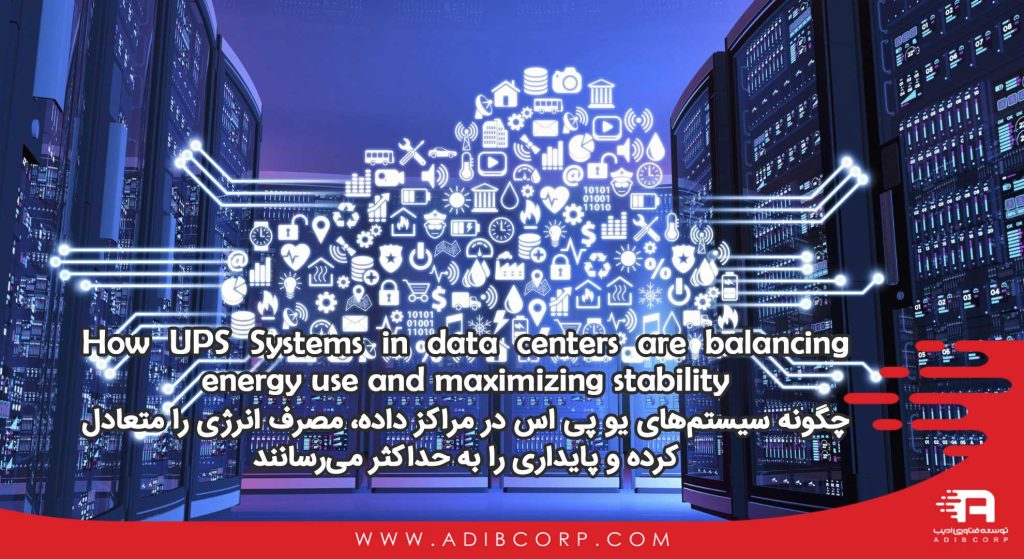Arturo Di Filippi, Offering Director, Smart Power & EMEA Business Product Development at Vertiv, discusses sustainability and the role of UPS Systems in data centers
Low-emissions sources are set to cover almost all the growth in global electricity demand in the next three years, the latest report from the International Energy Agency has found. This is great news for the sustainability agenda – not least in helping businesses across all industries accelerate their march towards net zero.
But it’s not all plain sailing in the world of renewables, as the transfer of generation from large fossil fuel power plants has left power networks less predictable and more susceptible to network faults. Indeed, many experts say that matching demand to available supply and building in greater system resilience for faults is the most prescient challenge for the new renewable-powered grid.
Data center providers are well placed to help balance grid services
Fortunately, data center providers are well placed to help balance grid services because of their use of uninterruptible power supply (UPS) systems, which help to maintain a continuous supply of power. UPS systems typically provide emergency power for a short time (five to 10 minutes) in cases when there are unexpected disruptions, such as mains power failure. They provide enough power for the IT load until the grid is online or additional grid generators kick in.
Let’s look at the challenges ahead and the energy management initiatives that can help overcome them.
Tackling imbalances in the grid
When mismatches in energy from grid-based generators and consumers occur, grid frequencies begin to change. Then, when supply rises above demand, the frequency rises, and vice versa. The greater the intermittency of energy supply with renewable inputs, the more often imbalances arise. Furthermore, traditional frequency regulation is too slow for today’s demands, where containment reserves must be able to increase or reduce electricity demand within milliseconds.
UPS systems include battery energy storage that could alleviate grid infrastructure constraints and offer equipment owners the potential to provide grid services and enable revenue generation, as well as cost savings on electricity use. These systems can also provide grid-balancing services by using one of the two types of energy devices; “behind the meter”, which refers to the power used on-site, on the energy user’s side of the meter, “In front of the meter”, provides electricity on the grid and utility side and is a different proposal, in not prioritizing the critical load. These services can be advantageous for any electrically powered critical asset that consumes electricity.
A whitepaper found “fast frequency” response (one of the components of active power to be adjusted within 500 milliseconds to one second) to be a potentially lucrative area of energy-balancing services for data centers. This also poses very little risk to the data center battery autonomy.
Smart grid-ready UPS
A survey by research group Omdia reports that smart grid-ready UPS deployment is likely to be prevalent in data centers within the next four years as operators look to develop demand-side response energy management strategies, stabilizing the grid energy supply as natural energy generation increases across the world.
As well as turbo-charging sustainability initiatives, grid-balancing services for UPS systems make financial sense as these units often stand without using their batteries for very long periods of time. 80% of Omdia’s survey respondents estimated that 10-50 per cent of the capacity of batteries in today’s data centers have excess power storage and can potentially be used to support the electricity grid. There are significant cost benefits too; the whitepaper states that one megawatt of battery support can earn a data center up to £85,000 (approximately) in revenue every year, or millions of GBP for a company with multiple megawatt data centers.
UPS systems have evolved to attain high efficiency with smaller footprints, as well as improved battery energy storage using new lithium-ion technology and remote monitoring systems. Incorporating technology to interact with the electric grid means data center operators can be smarter about the amount and timing of energy consumption. Taking this a step further, under the tariff-based schemes available in some regions, some data center operators are running grid-balancing projects using UPS technologies to lower electricity consumption during peak demand and earn money.
As the intermittency of renewables continues to pose a challenge to grid operators, smart assets like the UPS with grid support functionalities and backup power systems offer part of the solution to stabilizing the electricity grid. In this scenario, data centers have the potential to become valuable energy hubs for all industries and across geographies.



